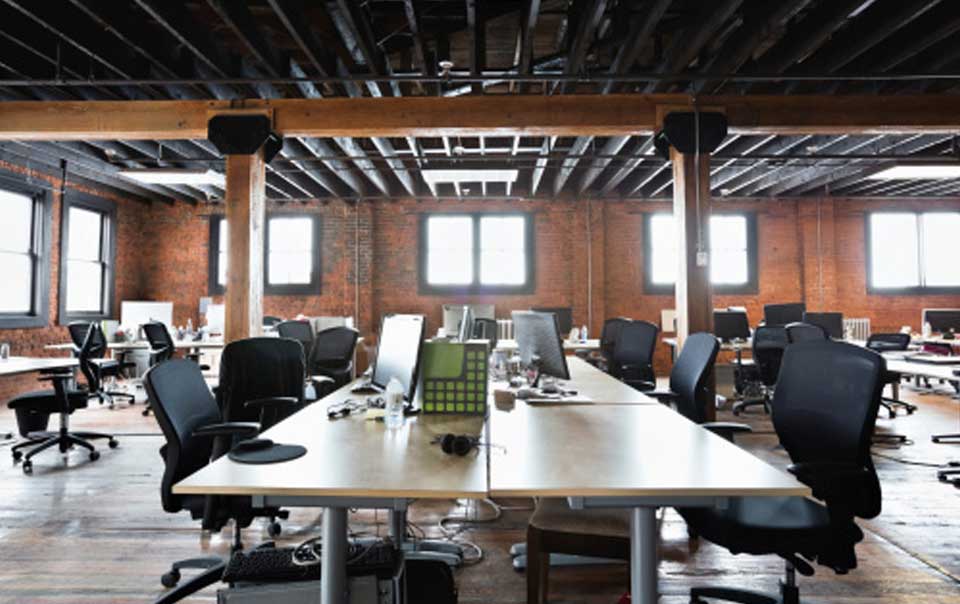 I, like many of you have not visited my desk at my office for many months – it sits alone in my office in my mostly vacant office building where my work used to be completed – before Covid-19. Meeting with clients in my conference room does not happen, saying hello to others working on my floor or while visiting the building cafeteria does not happen. Seeing the office space cleaners does not happen. Walking to close-by amenities does not happen and many are not open. It would be easier to find a close-by parking space because so many fellow employees are also working from home offices, but I do not look for office parking space.
I, like many of you have not visited my desk at my office for many months – it sits alone in my office in my mostly vacant office building where my work used to be completed – before Covid-19. Meeting with clients in my conference room does not happen, saying hello to others working on my floor or while visiting the building cafeteria does not happen. Seeing the office space cleaners does not happen. Walking to close-by amenities does not happen and many are not open. It would be easier to find a close-by parking space because so many fellow employees are also working from home offices, but I do not look for office parking space.
The current situation for office space users, as difficult as it is, will not last. So many professionals are working so hard to find a way to overcome Covid-19 that, as they say, we shall overcome!
In the meantime, responsible corporate and small business owners and senior staff having decision making responsibilities must plan for a brighter future – where many if not most employees will be back at a desk, working and collaborating with others in the office.
Now is the time to review the current leasehold commitments and project your ideal future corporate and employee office requirements – and design an office occupancy path forward that can work as Covid-19 health and travel conditions are mitigated thru new therapies and the availability of a vaccine that works.
Here is the review process:
- Review your lease document to fully understand your current responsibilities
- Meet with a Commercial Real Estate broker/consultant to discuss your current and going forward obligations to your employees, stakeholders, and Landlord.
- Obtain a consensus with your senior staff and other key employees as to how much and what type of office space can best fit your needs for the future as the Covid 19 crises becomes more manageable.
- Review the local market landscape to understand current conditions and how the lack of demand for office space and the availability of sublease options may open up pockets of opportunity for either re-negotiations with your landlord or for a relocation to more appropriate office space to meet a re-evaluated company space requirement.
- Review a current office space survey from your broker that identifies all the available office space alternatives in your market area that would be economically feasible to consider.
- Narrow down the available office alternatives to a hand-full and do research on these options to make sure they are viable alternatives.
- Schedule and visit available office buildings and tour the suites that could possibly meet your future needs.
- Review and discuss a draft Request for Proposal with your broker, edit its content to make sure it conveys current and future office space needs, and then send it to a few alternatives that appear to meet your needs.
- Upon return, review the responses with senior staff and your well-versed and experienced commercial real estate broker.
- Either send a Request for Proposal to your current landlord, or if in close contact with your landlord, meet and commence negotiations to determine if it makes sense to remain in your existing space depending on the terms and conditions offered. Prior to this meeting you will have the benefit of knowing the economics of other competitive offerings.
- Over the course of hundreds of lease negotiations, I have found that the least stressful and disruptive path for office users planning for their future (pre-covid 19) would be to either renew or extend their office space lease. Approximately 80% of all office leases are renewed or extended at the end of their lease term. This still leaves 20% of all leases where alternative action takes place – relocation, downsizing, expanding, purchasing a property, committing to a ‘build to suit” property, or closing down operations entirely.
- For a relocation path to be viable the cost savings associated with a relocation would have to offset the cost of moving – the move cost itself, new furniture, new IT infrastructure, business disruption due to the planning, evaluation of alternatives, senior management time devoted to the process, and allocating an internal move-coordinator or hiring an outside vendor to oversee the entire move process. The numbers need to “add up” and employee “buy-in” would be a key consideration for any geographic move.
The combination of working with a very experienced commercial real estate broker, with your senior staff commitment to meet the covid-19 occupancy challenge, can and will result in a path forward to meet current and future occupancy needs and the “vacant desk” will become a relic of the past – you just need to get started now on the path outlined above.
We can help – my recommendations have assisted hundreds of companies in the suburban Boston market to identify and implement the best path forward when evaluating their occupancy options.

Vacant desks can and should be filled with hard working employees that are collaborating and using their talents and imagination to meet company objectives. We can help with this transformation to a more productive and brighter future.
Bruce S. Lee
bruce@leepartners.com 781.290.8101 (cell phone direct)
